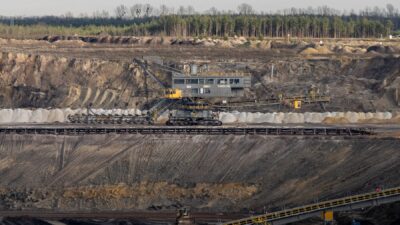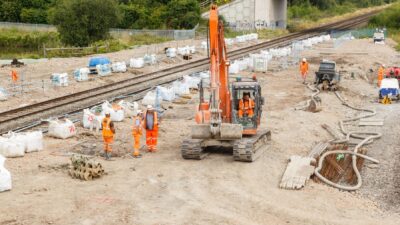
Water regulation in Italy: considerations on the new MTI-4
Ahead of the new regulatory period for the integrated water service, in December 2023, ARERA (Autorità di Regolazione per Energia Reti e Ambiente) published the decision setting the new regulatory framework for Italian water networks, the so-called MTI-4. According to the latest evidence, the regulation contributed to improve the outcomes… Read More

Green agreements: Oxera’s perspective on the new UK guidelines
The CMA has launched its Green Agreements Guidance to help businesses co-operate on environmental goals. This new guidance will help businesses understand how they can collaborate on environmental sustainability goals while adhering to the law.1 Oxera welcomed the opportunity provided by the CMA to comment on the draft… Read More

Rethinking HS2
On 4 October 2023, Prime Minister Rishi Sunak confirmed that Phase 2 of High Speed Two (HS2) would not go ahead.1 Was this the right call? How do we make the most of where we are now? To answer these questions, we need to understand why HS2 was… Read More

The Oxera Energy Model: price coupling in the European energy mix
Oxera’s new Energy Model enables detailed analysis of a range of future scenarios involving the energy generation mix in Europe. The interactive map below showcases one example relating to price coupling. (For an introduction to this topic, see Oxera’s Agenda article from April 2023.)… Read More

Carbon prices: working together or pulling apart?
Carbon pricing is often recommended by economists as a way to reduce greenhouse gas emissions. However, in practice, several different carbon prices are used in the aviation sector. What are each of these prices, and why do they differ? And are carbon markets even working correctly? Given the unfolding… Read More

Contemporary infrastructure business cases: assessing impact in the round
Recent developments in infrastructure business cases reflect a complex and volatile environment. Writing infrastructure business cases now comes with new challenges—but how can we tackle these challenges in such a rapidly evolving environment? We explore the key points that factor into this, including the Five Case Model, value-based decision-making, uncertainty,… Read More

Decoupling electricity and fossil fuel prices: bright idea or lights out?
The prolonged period of high energy prices in Europe has called into question the current design of electricity markets, and in particular the direct link between gas and electricity prices. Various short-term measures have been adopted to break this link, and some more fundamental changes to electricity markets are… Read More

Nature: the root of all capital?
Natural capital is relevant to all of us, not just those who are environmentally conscious. An unbalanced focus on financial or economic capital has led countries and companies to focus on policies that deliver short-term financial or economic gains, but at the expense of a longer-term loss in terms… Read More

The GHG Protocol: measuring firms’ carbon footprints
Like a growing number of businesses, Oxera has made an explicit commitment to reducing our carbon emissions and becoming a net zero organisation. As part of this, we have estimated our annual carbon emissions using the most widely used method: the GHG Protocol. Carbon reporting is still in its… Read More

Stepping on the gas: European emergency measures to deal with high energy prices
High gas and electricity prices across Europe have raised urgent concerns and started a debate about possible ways to mitigate the impacts on consumers. Countries have adopted a variety of national measures, which can be broadly classified under four categories: retail market interventions, wholesale market interventions, security of supply… Read More

